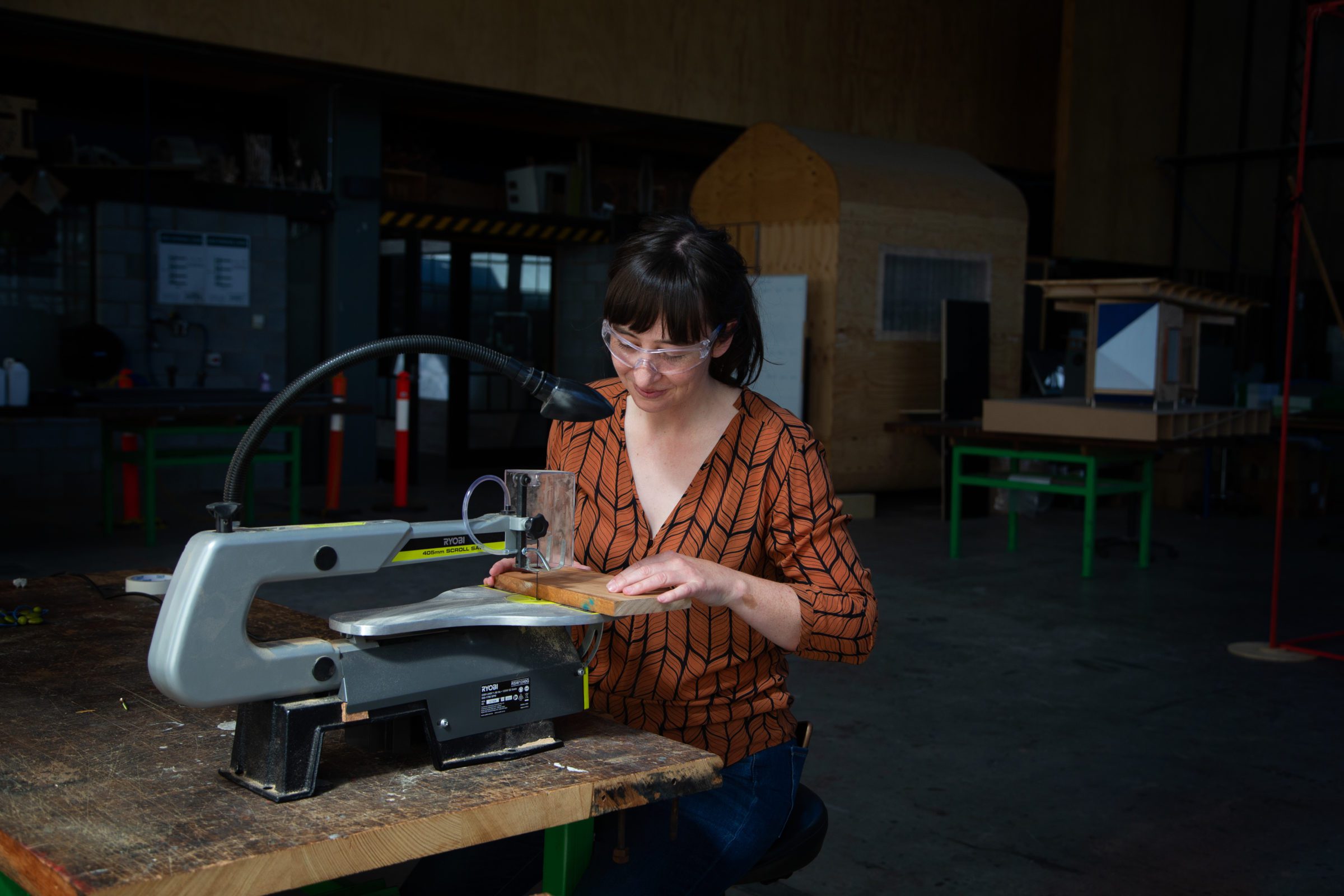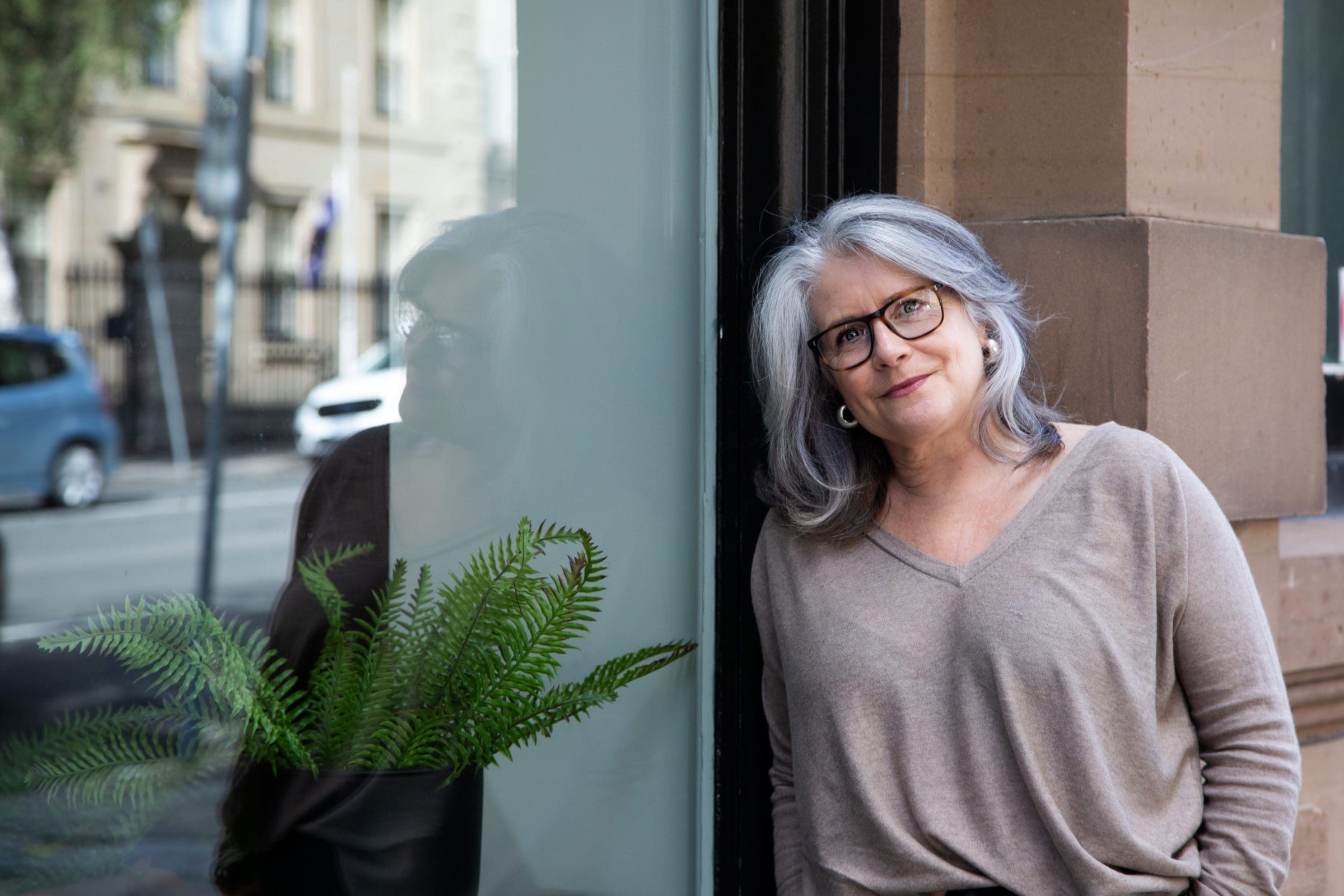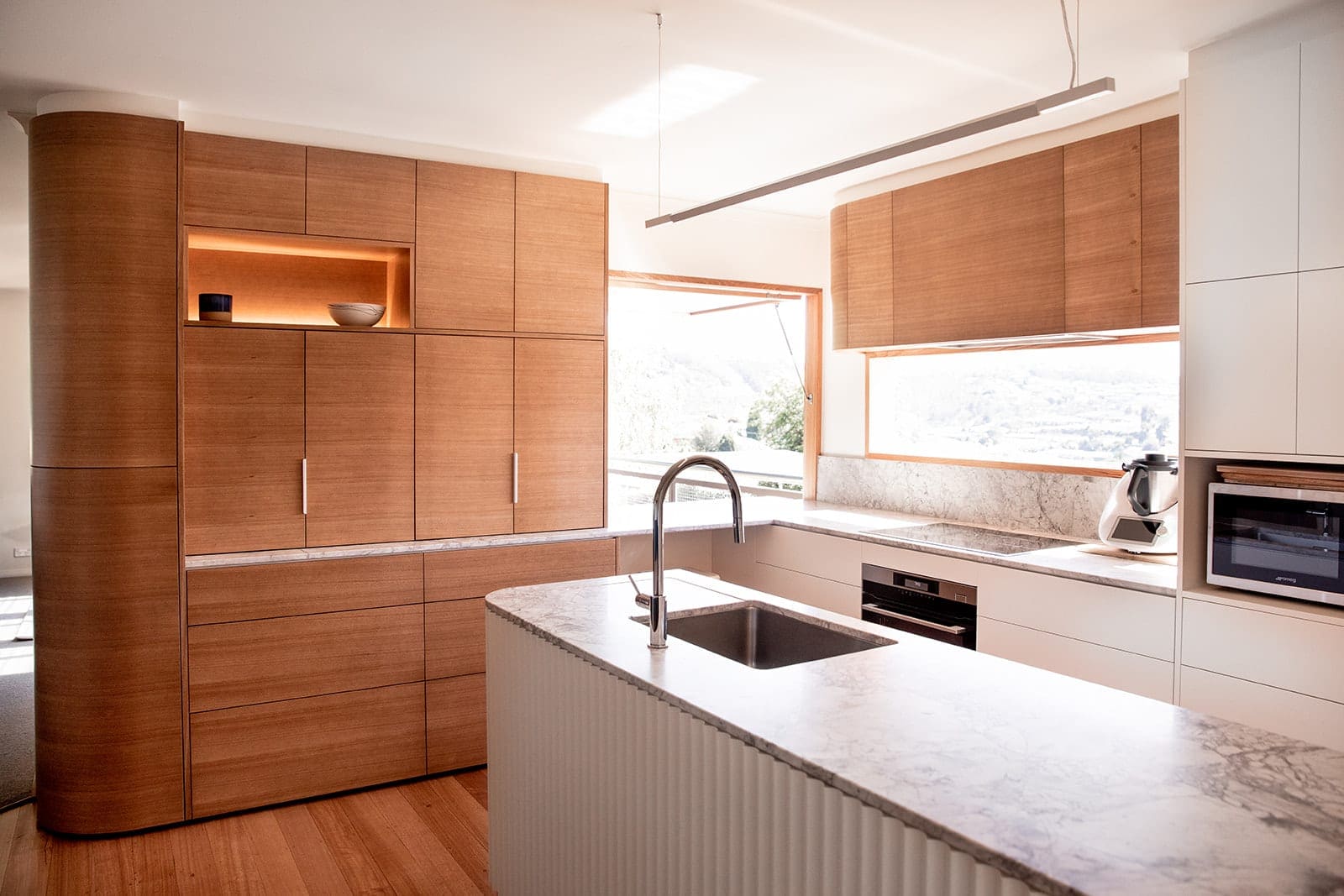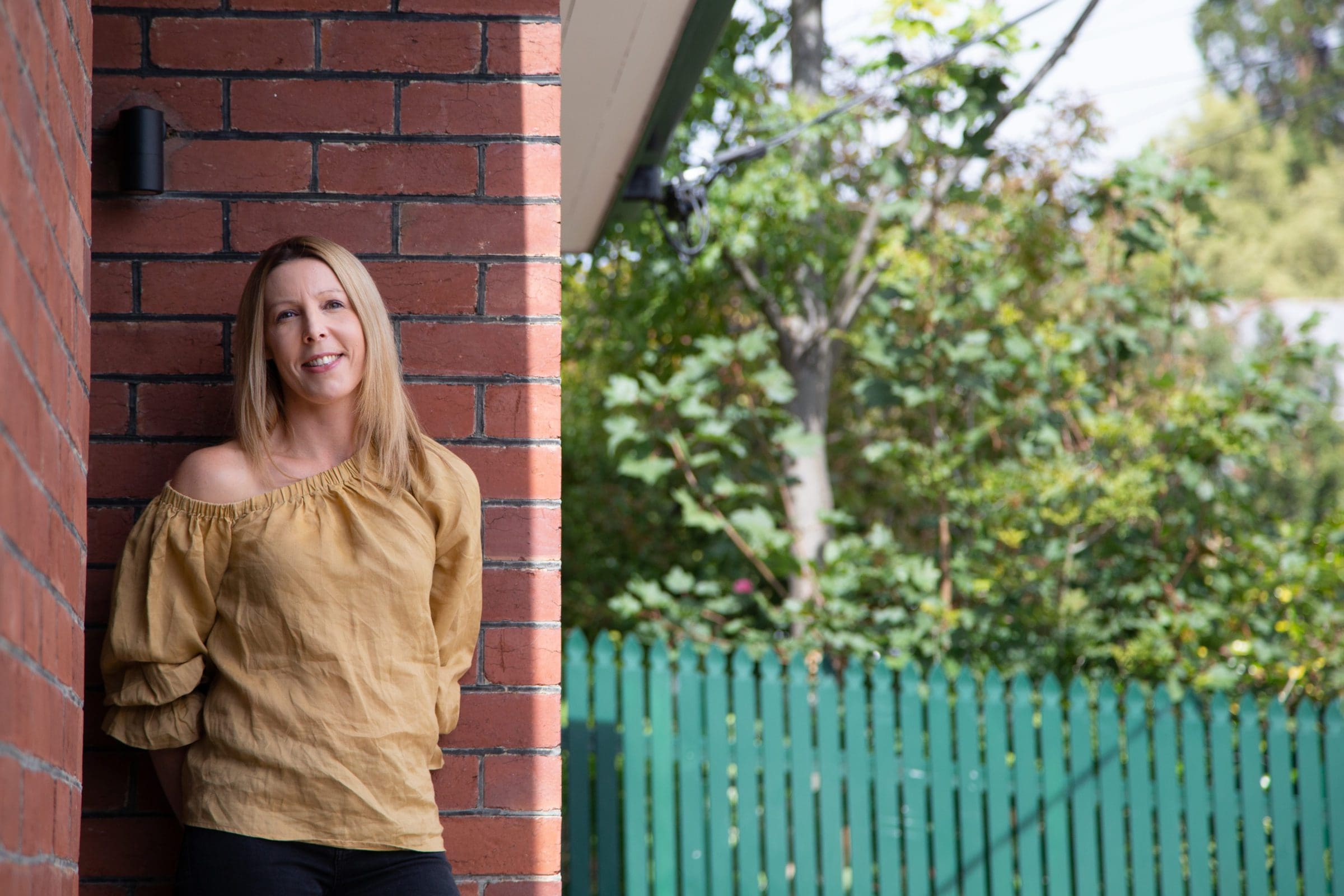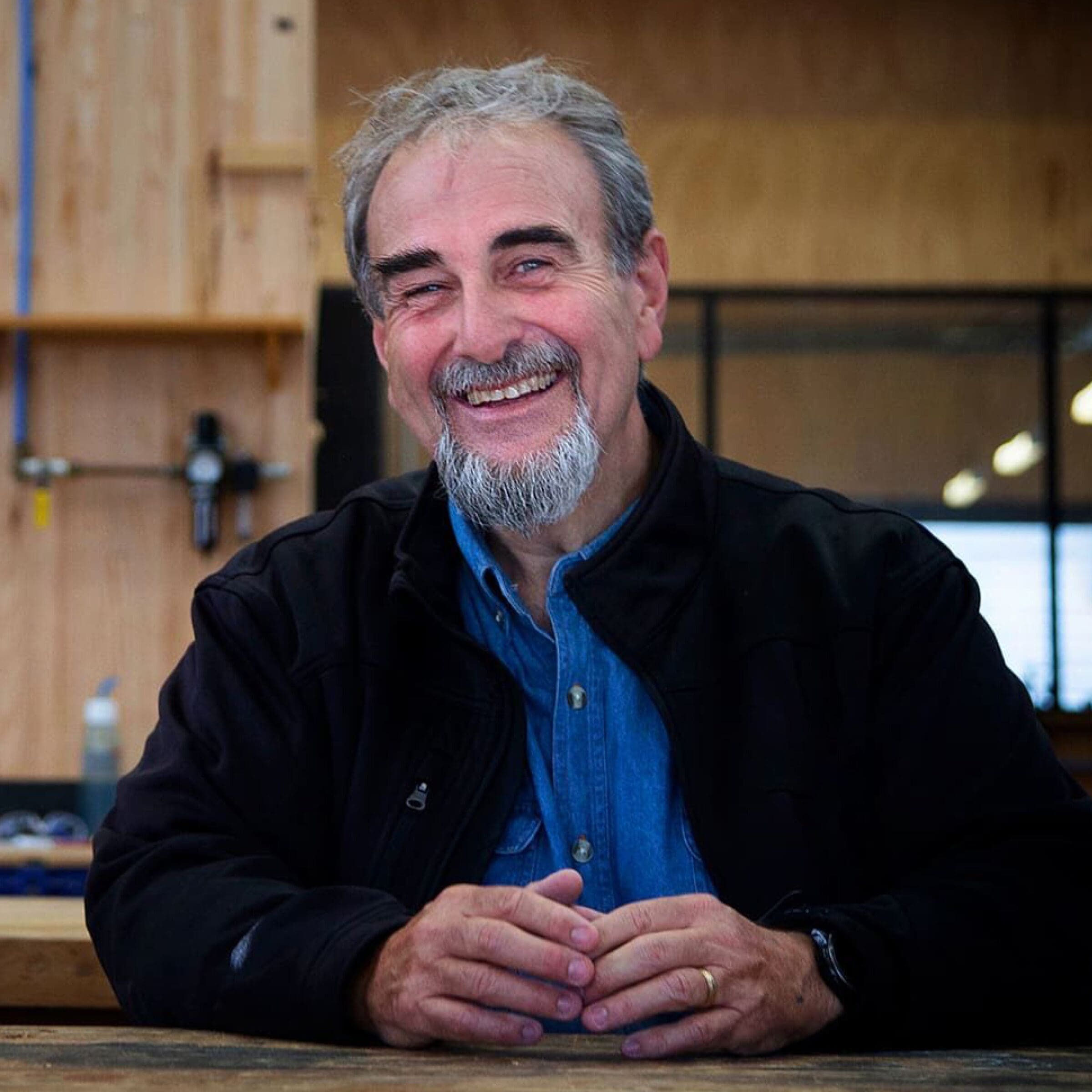The Tasmanian women making waves in the built environment: Kyra Wood, Postdoctoral fellow, University of Tasmania, Centre for Sustainable Architecture with Wood
Following the completion of her studies in Architecture at the University of Adelaide, Kyra Wood practiced architecture for several years, before continuing her education as a researcher looking at the cultural aspects of architecture and design in countries like Japan, South Korea and Vietnam. Fast forward to today, Kyra is a postdoctoral fellow studying timber as a building material at the University of Tasmania’s Centre for Sustainable Architecture with Wood. With a fascination for discovering how materials impact the built environment, Kyra says there’s no time like the present to learn new things. And so she does. Taking her fascination for timber to the National Institute for Forest Products Innovation, which is jointly funded by the Commonwealth and State governments and the timber industry, Kyra has been working to uncover how characteristics of Tasmania’s timber could be improved, helping to reduce waste and increase value by creating a highly durable and sustainable building material. Endlessly passionate about her work, Kyra hopes that her research not only sparks the interest of the architecture industry’s leaders but also can create lasting change.
1. Can you share more about the current research you’re undertaking (NIFPI/FWPA)?
I’ve been mainly responsible for two projects. One involves looking into how we can increase the durability and fire resistance of some of Tasmania’s timber species. Some of these species have a low natural resistance to fungi, insects and fire which limits the potential for the timber to be used in the built environment. If we can improve the material characteristics of timber species like Eucalyptus nitens, beyond the use of pulp or paper, that opens it up for greater use in the built environment. We’d like to see Eucalyptus nitens species in above ground applications for things like wall cladding and other exposed materials. To achieve this research goal, we’re working with an excellent team of Tasmanian and interstate researchers. We’re looking at methods varying from traditional vacuum pressure impregnation, to supercritical fluids, and dip infusion, as well as non-chemical methods like thermal treatment and densification, so we’re trying lots of different things.
Another important aspect of my research is looking at ways to accelerate durability analysis. With testing durability, it can take a long time for timber to deteriorate. 30 years is too long for us to wait for timber to potentially break down so we’re testing different methods, to accelerate the process. We’ve got a lot of trials underway, and I’m constantly fascinated by everything that’s going on.
2. What has been one of your favourite projects to be a part of as a researcher?
Really, all of my current research as part of the NIFPI projects is interesting, but I’ve personally been particularly intrigued by the potential use of supercritical carbon dioxide as a method for increasing the durability of Eucalyptus nitens. Eucs are exceptionally difficult to treat using fluid preservatives, so we are trialing a technique that essentially uses carbon dioxide in its gas form to transport a given biocide into the core of the timber. This closed-loop method is used commercially in Denmark to treat other refractory species like Spruce and could enable us to get enough biocide into the core of the timber to protect it in various outdoor applications. I’ve only been working for a short time as a timber researcher but the work I’m currently undertaking is hands on and it’s been really exciting going into unknown territory. This research is at the forefront in Australia and around the world. It’s something that came quite unexpectedly, I never thought I’d be doing this kind of research, but I love the discipline of it and the crossover into architecture.
3. What is one of your proudest achievements in your career?
Getting my PhD was definitely big for me. But also looking back, the first building that I designed and created was also really special. I was a young woman in the second year of my architecture degree. My old high school in Adelaide was looking to build a special free-standing room for Japanese language to be taught in. We ended up finding a Japanese master carpenter who volunteered to make shoji screens for the windows and doors using traditional Japanese joinery. His time on the project and learning from him was so valuable to me. His mastery of joinery was fascinating to watch and incredible to be a part of. Watching him assemble and craft timber with no fasteners or nails; that’s probably when I really fell in love with timber as a building material. The generosity of the volunteer effort and the spirit of community was also very special to be a part of. I was a total beginner designer at the time, but looking back, I realise I had a lot of nerve and perseverance, and that little building (Nadeshiko) is still one of my proudest achievements.
4. How will your research impact the built environment?
In Tasmania, Eucalyptus species make up approximately 70% of the state’s plantation resource. If we can improve particular characteristics of this timber, it could lead to increased uses for this undervalued and relatively sustainable resource and decrease our reliance on other building materials that are more detrimental to the environment, like steel and concrete. It still feels like a far-off outcome when I’m looking at things like fungi under a microscope but that’s where we want to end up!
5. Is there another female in your industry that has inspired you?
Absolutely. Christine Garnaut first comes to mind, she was my PhD supervisor and an Associate Professor at the University of South Australia. I studied with her for the duration of my PhD and she supported me the whole way through. She was so kind, humble, generous with her time, and in a good way, a total boss! Her dedication to her students, good humor and support will stay with me for my life.
I would also have to include the PhD students that I’m working with at CSAW now. Most of the women are from foreign backgrounds, living in a foreign country, and English is their second language. They’re just so tenacious and fierce and they inspire me on a regular basis.
6. What makes Tasmania the right place for you to pursue your passion as a researcher?
Tasmanian timber design and craftsmanship have always been highly regarded. I’ve always known about it, even as a child I remember hearing my dad talk about Tasmanian timber and design. There are amazing things going on here already, and great opportunities to further research and further sustainability in architectural uses of timber. Looking at the politics of timber use and past issues, I really believe in the importance of research, and of being willing to look at both sides and have an open, ongoing conversation about the sustainability of timber use.
7. What does the future of the architecture industry look like in Tasmania?
I think that the more that we can get timber products to be easy to produce, durable, fire resistant in application, and structurally reliable, the more of its use we’ll see in architecture and design.
We are starting to see Tasmanian timber in the mass timber industry. CLTP is now making mass timber out of plantation Eucalyptus nitens. That’s really a world first, making mass timber out of hardwoods, as traditionally it has always been made out of softwoods. There’s huge opportunity in using our plantation resource, if we can start to get architects to look at it and see its beauty and value. This research is a great crossover for me because I’m straddling both industries. I really hope the things I’m learning can make it back into the architecture industry.
8. This year, the theme for International Women’s Day is Choose to Challenge- Choosing to challenge and call out gender bias and inequality and celebrating women’s achievement to help create a more inclusive world. In your industry- what would you choose to challenge?
I’d choose to challenge the perception that women are going to be better at certain things, for example, the stereotype that women are best at jobs in admin, events and hospitality. With the invention of new technology, we’re now able to get into industries where manual labour was a prohibitive part of the job. We now have tools and technology that allow women to contribute and partake in male dominated industries. Our brains have always been capable, but now we just need to continue to break down stereotypes and get women into those jobs. Things like quotas challenge the industry to try and find positions for women in all types of jobs, which I fully support.
9. What do you think can be done to help elevate female voices in architecture?
Reexamining systems like professional indemnity insurance and registration fees, which can prohibit women staying in the field. If you can’t afford the expense of this insurance to practice on your own, you have to work for another person, which for a lot of female architects, isn’t ideal if you’re trying to raise a family. The architecture industry is known for its over working culture so for a lot of women, if you have children, it’s hard to continue in a studio practice because of the demands of the job, but going out solo is unaffordable. When I suspended my registration in Adelaide in 2012, women in architecture made up only 17% of the field but when I graduated, women made up 50% of my peers. The demands of the job are often unreasonable, not sustainable and exclusionary in terms of fees, and women seem to wear the cost of that in architecture more than men.
10. What advice would you give young girls/women interested studying architecture?
The same advice my sister gave me; bury your self-doubt on a mountain and never look back.
11. What three words define your research?
Timber. Sustainability. Curiosity.
12. How can our readers support your work?
Be open to the conversation about timber. Investigate materials whether they be timber or not – but read the research. Expand your knowledge and reach out to researchers who are studying materials and ask them. There’s such a need for our research to get out there and there’s always more research to be done.


